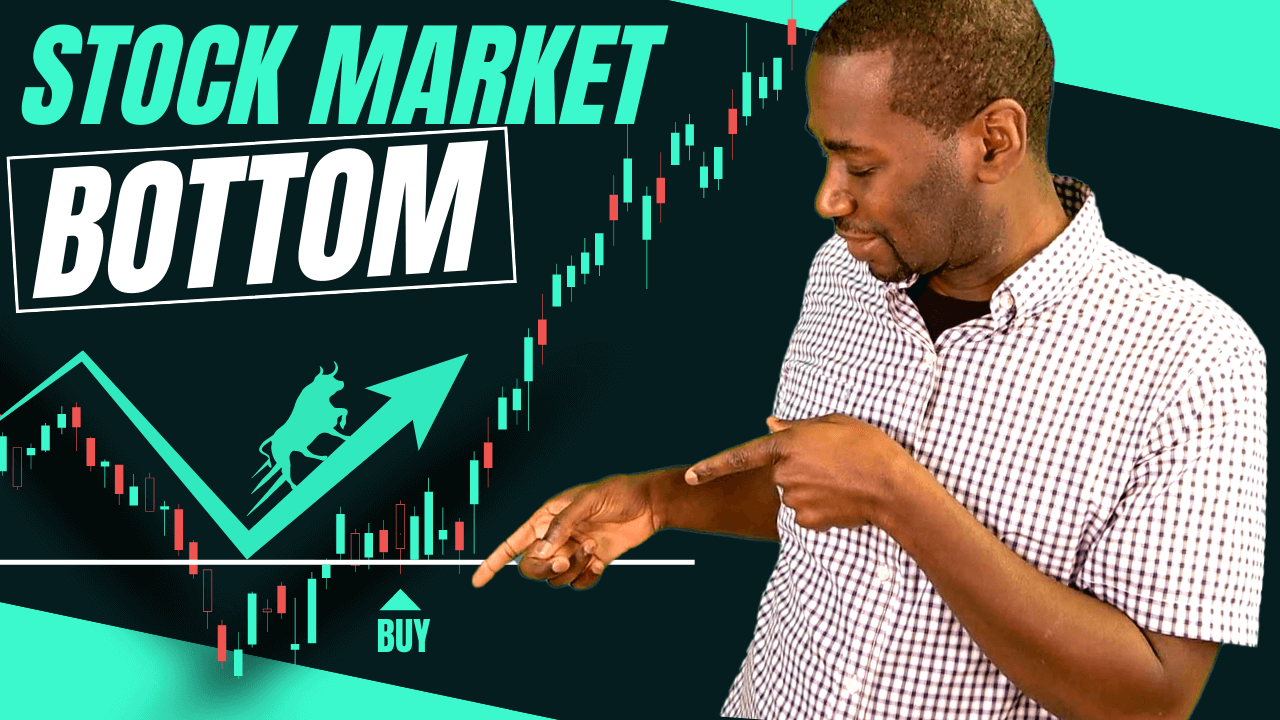How can you tell if a stock has reached the the lowest it will go?
Stock charts have tops and bottoms, and each can indicate if it's a good time to buy or sell.
How can evaluate if a stock has reached the "bottom"?
In this episode, I'm breaking down 4 ways you can do so.
Audio Version:
You can also listen on Spotify, ApplePodcasts and Stitcher
Video Version:
1. Calling a bottom is a process, not a 1-time event
Paying attention to the news and how much of that information is already baked in is key.
The market is forward-looking, so most of the time what the news is talking about today has already been included in the sell-off price.
If we do not get new news or new "bad" information, it's likely prices will begin to stabilize as the market looks forward to improving economic conditions.
2. Using indicators
Indicators can be super useful for determining when trends end, and new ones begin.
A lot of people mistakenly use indicators looking for 100% confirmation that some event is going to happen such as the stock moving higher.
But if we look at the definition of the root word "indicate" is to "point out, or to show" never did it say to "predict".
Indicators can "point out" or "show" us where the bottoming process may begin to happen. The key is to use the right indicators to tell you the right story at the right time.
If you don't know how to use indicators I greatly would suggest enrolling into our Masters Class.
3. Knowing risk vs. reward ratios
At some point, we have to know that we are willing to pay for a stock or how much we are willing to risk for what type of return.
When stocks sell off, there comes a price point where you have to value the company's core business and where the company can go given the current market conditions (and assuming they will improve).
Assuming market conditions will improve, at some point you can consider how much worse can things get which in turn tells you ow much worse the stock price can get, and if things get better how much better can the stock price get, ultimately giving you your risk vs. reward ratio.
4. Understanding business and the business of publicly traded companies
When you understand business in general, you will understand that there are levers that companies can pull to improve their balance sheet.
Companies can reduce their marketing spend, they can lay off employees, they can even raise their prices.
CEO's of big companies don't just sit there and watch their company ship sink.
Publicly traded companies know they have to deliver stellar numbers to wall street and their share holders.
So these companies are always trying to get better, figure out supply chain issues, plan for the future and learn from the past.
In theory, the great companies execute and eventually figure out ways to navigate tricky market environments and ultimately return greater profitability than ever before which means their stock price usually has a floor a number it will not go below.
To sum up...
...You need a game plan to evaluate market tops and bottoms.
In order to do so, you need to understand the current environment and what the future can look like. You need to learn how to use indicators to get an idea of where the bottom may be, and have a fundamental understanding of business and the sectors companies operate in, as well as the levers they can pull to keep the company afloat and thrive into the future.
If you would like to learn more about the fundamental and technical analysis of stocks, I recommend joining us inside of Power Trades University.
